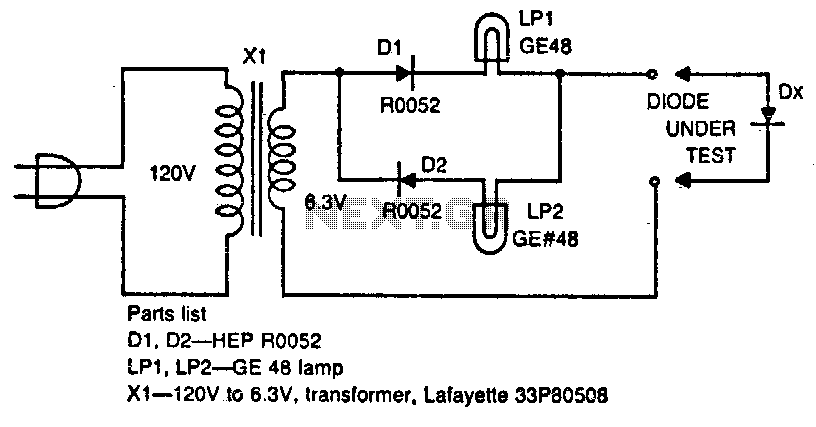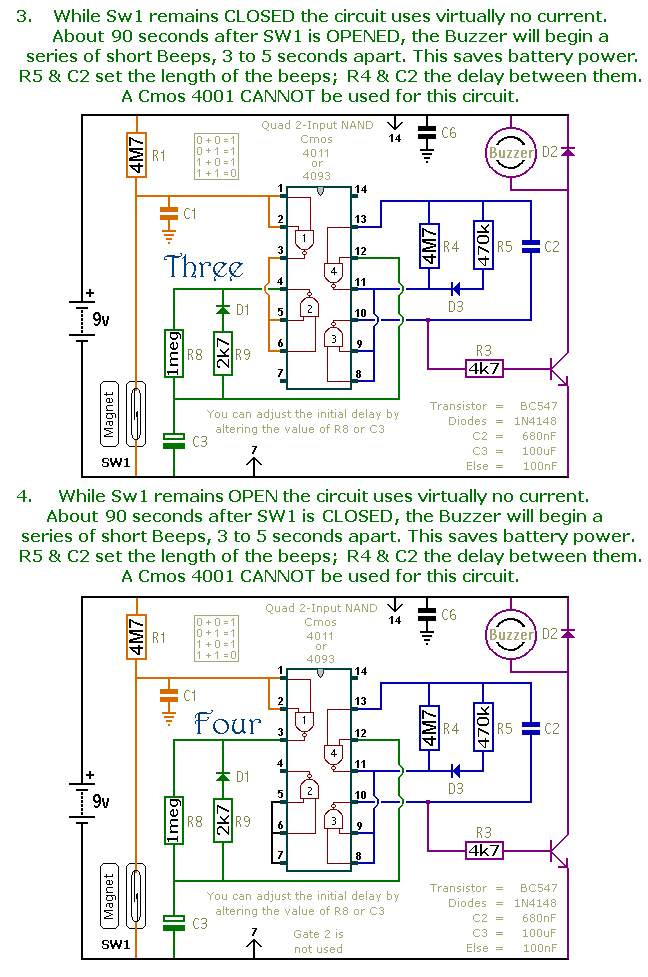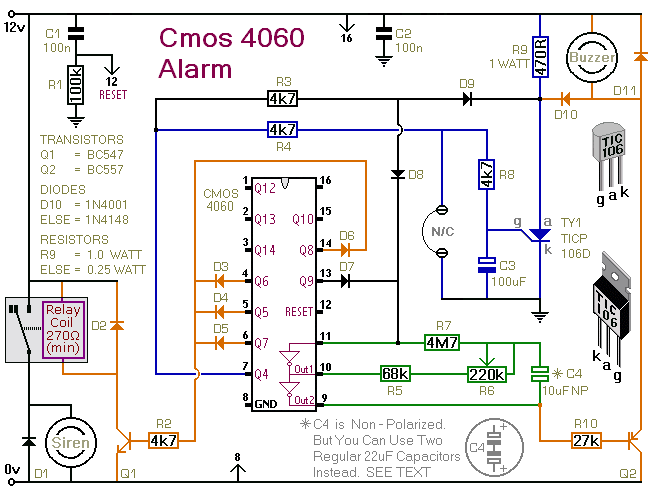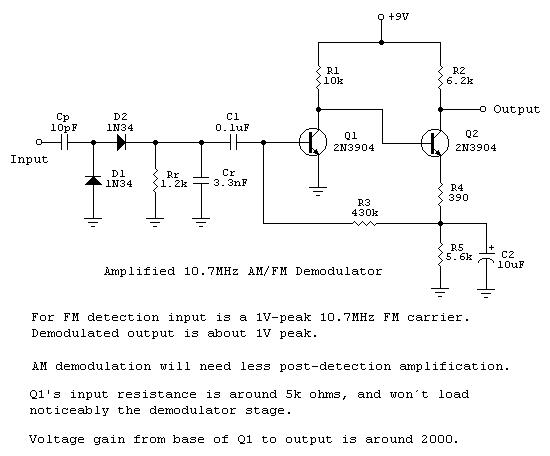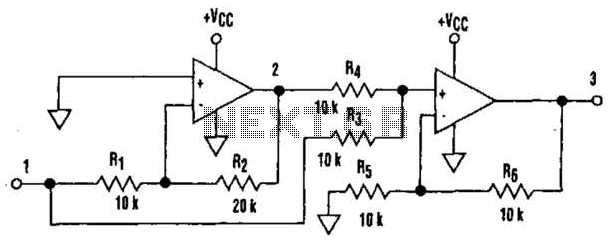
Diode Cmos Stabilizer
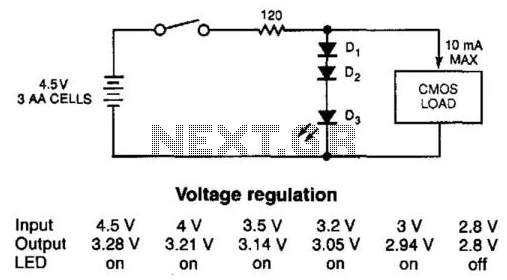
The simple diode network can stabilize the voltage supplied to CMOS circuitry from a battery. D1 and D2 must have a combined forward-voltage drop of about 1.5 V. D3 is an LED with a forward-voltage drop of about 1.7 V. The table shows the network's output voltage as the battery's voltage declines.
The described circuit employs a diode network designed to maintain a stable voltage level for CMOS (Complementary Metal-Oxide-Semiconductor) circuitry, which is sensitive to variations in supply voltage. The network consists of three diodes: D1 and D2, which work together to achieve a combined forward voltage drop of approximately 1.5 V, and D3, an LED that introduces a forward voltage drop of around 1.7 V.
In operation, as the battery voltage decreases, the output voltage from the diode network is regulated to ensure that the CMOS circuitry receives a consistent voltage supply. This is particularly important in battery-powered applications where voltage levels can fluctuate as the battery discharges. The forward voltage drop of the diodes is critical in determining the effective output voltage. The combined forward voltage of D1 and D2 can be selected based on the specific requirements of the CMOS device, while D3 serves both as a voltage reference and an indicator of the circuit's operational status.
The output voltage can be monitored through a table correlating the battery voltage with the output voltage, illustrating how the diode network compensates for the declining battery voltage. This stabilization mechanism is essential for preserving the integrity and performance of the CMOS circuitry, ensuring reliable operation even as the power source wanes.
In summary, this simple diode network effectively stabilizes the voltage supplied to CMOS devices, utilizing a combination of diodes with specific forward voltage drops to maintain consistent performance in battery-operated systems. The simple diode network can stabilize the voltage supplied to CMOS circuitry from a battery. D1 and D2 must have a c ombined forward-voltage drop of about 1.5 V. And D3 is an LED with a forward-voltage drop of about 1.7 V. The table shows the network"s output voltage as the battery"s voltage declines.
The described circuit employs a diode network designed to maintain a stable voltage level for CMOS (Complementary Metal-Oxide-Semiconductor) circuitry, which is sensitive to variations in supply voltage. The network consists of three diodes: D1 and D2, which work together to achieve a combined forward voltage drop of approximately 1.5 V, and D3, an LED that introduces a forward voltage drop of around 1.7 V.
In operation, as the battery voltage decreases, the output voltage from the diode network is regulated to ensure that the CMOS circuitry receives a consistent voltage supply. This is particularly important in battery-powered applications where voltage levels can fluctuate as the battery discharges. The forward voltage drop of the diodes is critical in determining the effective output voltage. The combined forward voltage of D1 and D2 can be selected based on the specific requirements of the CMOS device, while D3 serves both as a voltage reference and an indicator of the circuit's operational status.
The output voltage can be monitored through a table correlating the battery voltage with the output voltage, illustrating how the diode network compensates for the declining battery voltage. This stabilization mechanism is essential for preserving the integrity and performance of the CMOS circuitry, ensuring reliable operation even as the power source wanes.
In summary, this simple diode network effectively stabilizes the voltage supplied to CMOS devices, utilizing a combination of diodes with specific forward voltage drops to maintain consistent performance in battery-operated systems. The simple diode network can stabilize the voltage supplied to CMOS circuitry from a battery. D1 and D2 must have a c ombined forward-voltage drop of about 1.5 V. And D3 is an LED with a forward-voltage drop of about 1.7 V. The table shows the network"s output voltage as the battery"s voltage declines.
